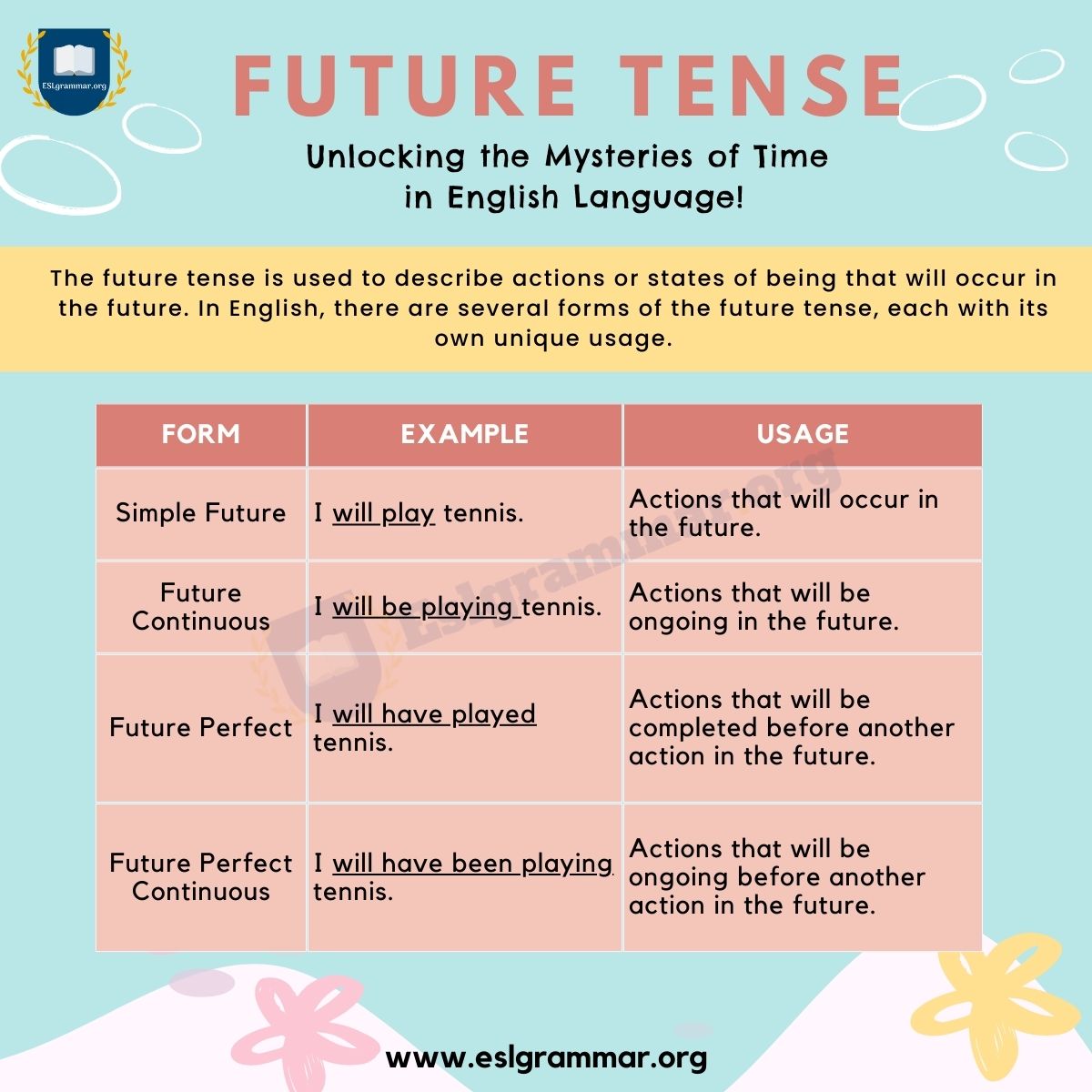Future
Understanding the Future - A Look Ahead
Imagine, for a moment, waiting for something important to happen, something that's already set in motion but isn't quite ready for you to see or use just yet. That feeling of anticipation, of knowing a result is coming, is a bit like how some very clever systems handle their upcoming tasks. We often think about what's next, what's on its way, and how we might get a hold of it when the time is right, you know, when it truly becomes available for us to work with.
Think about those moments when you send off a request, perhaps for some information or for a task to be completed, and you expect a reply or an outcome at some point. You might not get it right away, but you have a sort of placeholder, a promise, that the answer will arrive. This idea of a placeholder for something that will come later, something that will deliver a piece of information or a finished job, is actually a pretty fundamental concept in how certain sophisticated operations are set up, so to speak.
This concept extends even to how certain digital instructions are prepared, almost like telling a system to get ready for new ways of doing things that aren't quite here yet but will be very soon. It’s about preparing for what’s next, making sure everything is aligned for upcoming changes or results that are currently in a state of becoming. So, it's almost like having a special ticket to pick up your completed order once it's truly ready for collection, as a matter of fact.
Table of Contents
- What Does a Future Promise Deliver?
- How Do We Get Our Future Outcome?
- Considering the Future of Data Availability
- Are There Different Ways to Handle a Future Result?
- Is Your Future Information Unique?
- Sharing a Future Insight
- What About Warnings for Future Systems?
- Looking Ahead to Future Language Changes
What Does a Future Promise Deliver?
There's this rather clever sort of helper, you know, a special kind of setup, that gives us a way to reach out and grab the outcome of things that are happening in their own time. It's like when you ask someone to do something for you, but you don't stand there watching them do it; you just know they'll finish it and you can pick up the finished item later. This helper, in a way, gives us the means to connect with those finished items, those results, even if the work itself was going on in the background, quite separately from what you were doing at that exact moment, so to speak.
So, one of these tasks that runs on its own, a sort of independent piece of work, is often kicked off using a specific kind of command, or perhaps a particular instruction. It’s a bit like telling someone to go bake a cake while you go do something else; the baking happens on its own schedule, and you don't need to be there for every step. This independent working style is pretty important for keeping things running smoothly, actually, allowing different parts of a system to get on with their jobs without waiting for each other to finish every single little bit, you know.
How Do We Get Our Future Outcome?
When you want to finally get your hands on that result, there's a particular action you can take. This action basically says, "Okay, I'm ready for it now." It will patiently wait until whatever was being worked on is completely finished and the result is prepared. Once that background task is done and the shared space where the answer is kept becomes available, this action will then retrieve the value that was put there. It's like waiting for a package to arrive; you keep an eye out, and once it's delivered, you can open it up and see what's inside, so that's how it often works.
However, there are times when this process might act a little differently. If the expected result comes from a task that was set up to be a bit "lazy" in how it gets going, meaning it only really starts doing its work when you ask for the result, then this retrieval action will actually come back to you right away. It won't sit around waiting at all because the work hasn't even started until you ask for it. This is a subtle but important difference in how these kinds of pending results are handled, you know, depending on how they were initially set up to run.
It's also worth noting that sometimes, this act of waiting for the result might take a bit longer than you might expect. There could be various reasons for this extended wait, perhaps the background task is quite involved, or there are other things happening in the system that cause a delay. So, while the idea is to get the result when it's ready, the actual time spent waiting can vary, and it might even extend beyond what you initially anticipate, which is just how things sometimes go.
Considering the Future of Data Availability
There's a simple check you can perform to see if a particular placeholder for a result is still considered "active" or "valid," in a way. If this check comes back indicating that it's not true, it means that the placeholder no longer points to anything meaningful or that it has already given up its connection to the expected outcome. It's like checking if your ticket for a future event is still good; if it comes back as not being valid, then it means you can't use it anymore to get what you were hoping for, you know, to access that particular data.
Are There Different Ways to Handle a Future Result?
When you're setting up one of these placeholders for an upcoming result, you can sometimes create it by taking the "shared state" from another similar placeholder. This is done using a special kind of transfer, a sort of "moving" of ownership, rather than making a direct copy. It's like if you have a unique key to a locker, and instead of making a copy of that key, you just hand over the original key to someone else. The original holder no longer has access, but the new holder now does, which is pretty interesting, if you think about it.
It's also important to understand that this particular kind of placeholder for a result is not something you can simply duplicate. You can't just make an identical copy of it and have two separate instances pointing to the same original result in the same way. It's designed to be a singular point of access, meaning that if you want to move its ability to retrieve a result, you have to transfer the original, not create a duplicate. This limitation is a core part of how it functions, actually, ensuring a clear path to the outcome.
Is Your Future Information Unique?
This specific type of placeholder, the one we've been talking about, is designed in a way that you can only really move it around, not duplicate it. What this means is that there can only be one instance, one specific ticket, that is connected to any particular outcome that's happening in the background. It's like having a single claim ticket for a coat at a cloakroom; only that one ticket can be used to get that one coat. So, if you hand the ticket to someone else, you no longer have it, and they become the sole person who can claim the item, which is a rather important distinction.
Sharing a Future Insight
However, there's another kind of placeholder that works a bit differently. Unlike the one that can only be moved, this other type of placeholder can actually be copied. This means you can have several instances of it, many different tickets, all pointing to the same asynchronous outcome. It's like having multiple copies of a movie ticket; everyone with a copy can get into the same show. This allows more than one part of a system, or more than one person, to keep an eye on and eventually access the same result without having to transfer ownership, which is quite useful for sharing information, you know.
This particular kind of shareable placeholder can be set up to contain the shared connection that was previously held by another similar item. It's as if you had a special piece of information, and you create a new, copyable version of it by essentially extracting the core connection from an existing one. This process is similar to how you might make a new, shareable reference from something that was originally held in a more exclusive way. So, it's a way of making a previously singular connection available for wider distribution, in a way, as a matter of fact.
What About Warnings for Future Systems?
Sometimes, when people are testing out new software or systems, they might come across messages that are a bit like a heads-up for what's coming. For example, while trying things out in a particular software environment, a warning might pop up saying that something currently working will no longer function in upcoming versions of the underlying system. It’s a bit like getting a notice that your old phone charger won't work with the next model of phone; it's a signal to prepare for changes down the line, which is pretty common in the world of technology, actually.
Looking Ahead to Future Language Changes
There's also a specific kind of instruction, almost like a special note to a compiler, which is the program that translates human-readable code into something a computer can understand. This instruction tells the compiler that a particular part of the program should be interpreted using rules or ways of expressing things that are planned to be available in a later version of the programming language. It’s a way of saying, "Hey, get ready for these new grammar rules; this piece of text should be read with those in mind, even if they're not officially here yet," you know, so it's preparing for what's next.
This special instruction acts as a clear signal to the system that a certain section of code needs to be processed with an eye towards what's coming. It directs the compiler to use specific syntax or meanings that are slated for a specified upcoming version of the language. So, it’s a proactive measure, ensuring that even today's code can start to align with the way things will be expressed and understood in future releases, which is a very forward-thinking approach, naturally, for programming languages.

Building on the Past To Create the Future
.png?1742514816)
Jobs at Future

Future Tense: Meaning, Different Types, Usage and Useful Examples - ESL